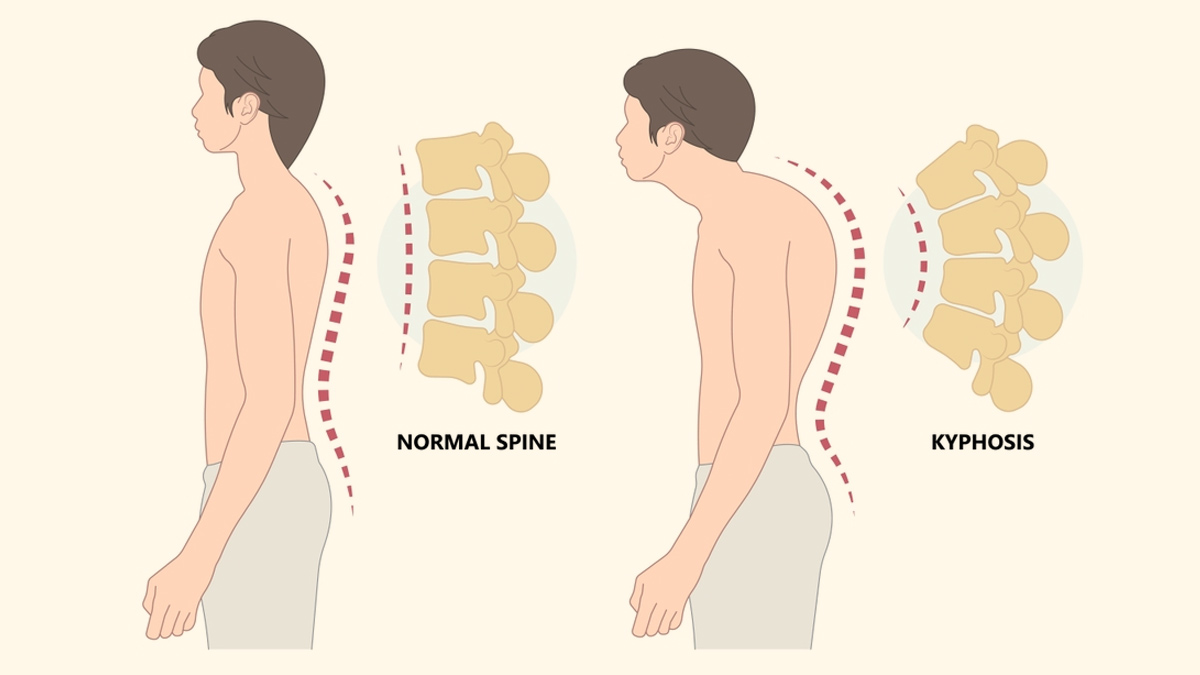
In the world of spine problems, such as Scoliosis and Kyphosis, there is a term called Dowager's Hump that is still used. Dowager's hump, also known as hyperkyphosis or kyphosis, is a health issue where the upper part of the back bends too much forward, causing a noticeable rounding of the back. To learn more about this, we spoke to Dr Ishwara Keerthi C, Consultant Spine Surgeon, KMC Hospital, Mangaluru, Karnataka.
Table of Content:-
Causes of Dowager’s Hump
"We don't know exactly how Dowager's hump progresses over time," said Dr Keerthi. "It could be caused by weakened muscles and degenerative disc disease, leading to vertebral fractures and an increasing forward bend. Or, it could be triggered by initial vertebral fractures, which then cause the forward bend to worsen," he added.

Upper Back Fractures
"Kyphosis is more closely related to fractures in the upper back (thoracic) than in the lower back (lumbar), and it becomes more common as the number of vertebral fractures increases," said Dr Keerthi.
Also Read: 6 Medical Conditions That Can Cause Chronic Back Pain
Spondylosis
"Another common finding in X-rays of older adults with excessive forward curvature is degenerative disc disease, also called spondylosis. Additionally, weak muscles in the spine are also connected to the development of excessive forward curvature (hyperkyphosis)," he added.
Ageing and Hormonal Changes
Dr Keerthi said, "Advanced age is a primary risk factor with hyperkyphosis becoming more prevalent as individuals grow older." According to the study published in the Journal of Orthopaedic and Sports Physical Training, kyphosis affects around 20-40% of older adults.

"Moreover, postmenopausal women are particularly susceptible due to hormonal changes, including a decline in oestrogen levels, which accelerates bone loss and heightens the risk of osteoporosis-related fractures," explained the doctor. He added that a substantial risk factor for future vertebral and extremities fractures is hyperkyphosis.
Family History and Lifestyle
"Individuals with a family history of osteoporosis or Dowager's hump have a genetic predisposition to developing the condition," said Dr Keerthi. "Furthermore, lifestyle factors, such as sedentary habits, poor nutrition, smoking, and certain medical conditions like scoliosis or connective tissue disorders contribute to an increased risk," he added.
Also Read: Back Muscles Not Growing? 5 Exercises, 15 Sets Is All You Need To Build A Wider Back
Symptoms of Dowager’s Hump
Dowager's hump is characterised by visible deformity in the upper back, but it is also accompanied by a range of distressing symptoms, according to Dr Keerthi.
"Individuals with this condition often experience back pain, stiffness, and reduced mobility," he said. "The excessive kyphosis can have harmful impacts on physical performance, the ability to carry out daily activities, and overall quality of life.," he added.

"Heavy chores are more challenging for women who have hyperkyphosis. There may be increased chances of frequent falls due to an imbalance in a forward-bent posture. These falls will increase the risk of osteoporotic fracture leading to further bending and complications of fracture," explained the doctor.
Way Forward
While managing this condition one needs to evaluate the cause of the bend. "A thorough evaluation of bone health and the general well-being of individuals is also very important. A high degree of suspicion and early detection of complications will lead to better outcomes," said Dr Keerthi.
"Treatment will be directed towards treating the cause of the deformity, such as treatment of osteoporosis and neurological condition along with holistic management of the key. Prevention of falls is also a main strategy in the management of these patients," he suggested.
Image Credits: Shutterstock, freepik
How we keep this article up to date:
We work with experts and keep a close eye on the latest in health and wellness. Whenever there is a new research or helpful information, we update our articles with accurate and useful advice.
Current Version